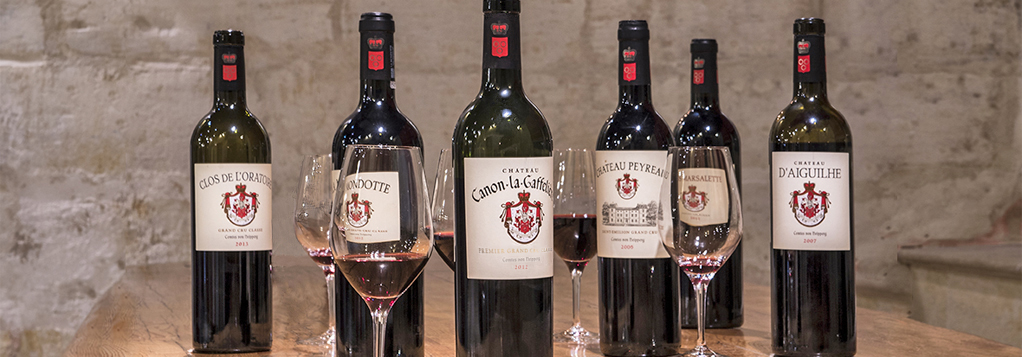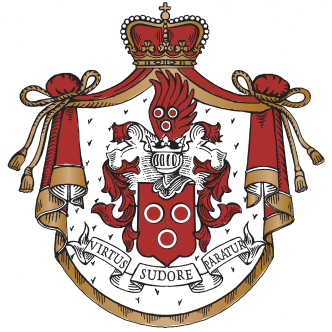





Eine Familie

Die Grafen von Neipperg sind seit dem 13. Jahrhundert untrennbar mit dem Weinbau verbunden.
Stephan Graf von Neipperg leitet heute mit Hingabe und Erfolg die in den frühen 1970er-Jahren von seinem Vater erworbenen Weingüter in Bordeaux.
Die nächste Generation macht sich schon bereit, das Familienwerk mit ebenso viel Bodenverbundenheit fortzuführen.
Mehr über ihren Wunsch nach Weitergabe erfahren

Weingüter

Stephans Vater Joseph-Hubert Graf von Neipperg erwarb Château Canon La Gaffelière und La Mondotte 1971. Es folgten einige Monate später Clos de l'Oratoire und Château Peyreau.
Stephan übernahm 1985 die Leitung der Güter. Mit der Unterstützung seiner Teams bemühte er sich von Beginn an darum, sie wieder auf den ihnen gebührenden Rang zu heben, und machte sich gleichzeitig daran, neue Terroirs zu erforschen.
Mehr über die Weingüter erfahren

Ein Grundgedanke

Die von Stephan Graf von Neipperg unmittelbar nach seiner Ankunft auf Canon La Gaffelière vorgenommene umfassende und kritische Analyse schuf die Grundlage für eine Erzeugerphilosophie, die auf dem Respekt der verschiedenen Terroirs und dem Streben nach einem autonomen Gleichgewicht der Ökosysteme basiert.
Dieser ökologische Ansatz verstärkte sich sehr schnell gegen Ende der 1990er-Jahre, um mit Blick auf den Fortbestand der Familientradition ein gesundes und kohärentes Pflanzenerbe an die kommenden Generationen weiterzugeben.
HIGHLIGHTS
New in 2025
With 2025 just around the corner, we'd like to extend our very best wishes to all our future (and past) visitors.
The year's schedule of visits and tastings is now complete, with a few new features!
Our visitors will now be able to taste directly from the barrel to identify the specificities of our different grape varieties, or choose a horizontal tasting of the same vintage of our different crus to understand the suptility of our terroirs...
In short, these offers tailored just for you are available at our two chateaux open to the public : Château Canon La Gaffelière and Château d'Aiguilhe.
For more information: click on the VISIT page!

Ludovic von Neipperg die neue Generation
In March 2021, Ludovic von Neipperg, Stephan's son, joined the family business as Technical Director. Following in his father's footsteps, Ludovic applies both traditional and innovative agro-ecological viticultural practices to the vineyards where he grew up.
On January 5, 2024, Ludovic von Neipperg was interviewed on the TV program “Le Grand Entretien” about the family business and the environmental and quality approach adopted by his elders over the past 40 years. Watch the full interview on our Youtube channel:
Le Grand Entretien with Ludovic von Neipperg by Michel Denisot

Premier Grand Cru und Bio-zertifiziert? In Bordeaux kein Widerspruch!
Der Ausbau des Jahrgangs 2014 wird in ein paar Wochen beendet sein. Rückblick auf den ersten bio-zertifizierten Jahrgang von Château Canon La Gaffelière und La Mondotte.
Die von Stephan Graf von Neipperg unmittelbar nach seiner Ankunft auf Canon La Gaffelière vorgenommene umfassende und kritische Analyse schuf die Grundlage für eine Erzeugerphilosophie, die auf dem Respekt der verschiedenen Terroirs und dem Streben nach einem autonomen Gleichgewicht der Ökosysteme beruht.
Dieser bereits 1988 präsente tiefgreifende ökologische Ansatz erhielt rasch eine langfristige Ausrichtung, um mit Blick auf den Fortbestand der Familientradition ein gesundes und kohärentes Pflanzenerbe an die kommenden Generationen weiterzugeben.
Er wurde gegen Ende der 1990er-Jahre durch die aufmerksame Beobachtung der verschiedenen Komponenten des natürlichen Lebensraums noch weiter verstärkt. Gleichzeitig erfolgte eine kontinuierliche Anpassung der Arbeit in den Weinbergen mit dem Ziel, die Umwelt bestmöglich zu wahren. Alles, was wir tun, basiert auf einem nach strengen Kriterien definierten, präzisen Parzellenprogramm.
Beobachtung und Analyse sind die beiden Pfeiler von Vignobles Comtes von Neipperg. Entsprechend wurde bereits 2006 eine Stelle für Forschung & Entwicklung geschaffen.
Das Ergebnis dieses langjährigen Bemühens um Leben und Vielfalt in unseren Weinbergen ist die Bio-Zertifizierung von Château Canon La Gaffelière und La Mondotte gemäß der Norm FR-BIO-10.
Zusätzlich erhielten beide Weingüter im gleichen Jahr die ISO-14001-Zertifizierung für die Einführung eines Umweltmanagementsystems.
Bis heute sind Château Canon La Gaffelière und La Mondotte die einzigen bio-zertifizierten Premiers Grands Crus Classés in einer Rotwein-AOC in Bordeaux.







